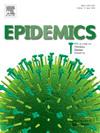Rtglm: Unifying estimation of the time-varying reproduction number, Rt, under the Generalised Linear and Additive Models
IF 2.4
3区 医学
Q2 INFECTIOUS DISEASES
引用次数: 0
Abstract
Most current methods to estimate the time-varying reproduction number (Rt), such as EpiEstim, rely on branching processes and the renewal equation. They also require subjective choices to set the level of temporal and spatial heterogeneity assumed. We propose a novel framework to estimate Rt based on Generalized Linear and Additive Models (GLM/GAM). By integrating the renewal equation model within GLM/GAM, the proposed framework, “Rtglm”, allows smooth estimation of Rt variations over time and space without relying on arbitrary scaling parameters. The performance of Rtglm was evaluated using historical datasets and simulated outbreaks. It demonstrated improved overall performance and accuracy compared to EpiEstim, as measured by the CRPS scores and Mean Square Errors respectively. However, when case incidence was low and Rt estimation relied on a smoothing term, Rtglm was marginally overconfident in its estimates. The method offers substantial improvement for the real-time estimation of spatio-temporal trends in Rt, with improved performance and lower reliance on arbitrarily set parameters. The open-source and user-friendly R package developed will also simplify user experience. Finally, the framework bridges gaps between epidemic monitoring methodologies and sets the stage for future extensions to enhance statistical inference and integrate additional epidemiological complexities, including the evaluation of intervention strategies.
广义线性和加性模型下时变再现数Rt的统一估计。
目前大多数估计时变繁殖数(Rt)的方法,如EpiEstim,依赖于分支过程和更新方程。它们还需要主观选择来设定假定的时间和空间异质性水平。我们提出了一种基于广义线性和可加模型(GLM/GAM)估计Rt的新框架。通过在GLM/GAM中集成更新方程模型,所提出的框架“Rtglm”允许平滑估计Rt随时间和空间的变化,而不依赖于任意缩放参数。Rtglm的性能使用历史数据集和模拟爆发进行评估。与EpiEstim相比,它的总体性能和准确性都有所提高,分别通过CRPS分数和均方误差来衡量。然而,当病例发生率较低且Rt估计依赖于平滑项时,Rtglm对其估计略微过于自信。该方法为实时估计Rt时空趋势提供了实质性的改进,提高了性能,降低了对任意设置参数的依赖。开发的开源和用户友好的R包也将简化用户体验。最后,该框架弥合了流行病监测方法之间的差距,并为今后的扩展奠定了基础,以加强统计推断和整合更多的流行病学复杂性,包括对干预战略的评价。
本文章由计算机程序翻译,如有差异,请以英文原文为准。
求助全文
约1分钟内获得全文
求助全文
来源期刊

Epidemics
INFECTIOUS DISEASES-
CiteScore
6.00
自引率
7.90%
发文量
92
审稿时长
140 days
期刊介绍:
Epidemics publishes papers on infectious disease dynamics in the broadest sense. Its scope covers both within-host dynamics of infectious agents and dynamics at the population level, particularly the interaction between the two. Areas of emphasis include: spread, transmission, persistence, implications and population dynamics of infectious diseases; population and public health as well as policy aspects of control and prevention; dynamics at the individual level; interaction with the environment, ecology and evolution of infectious diseases, as well as population genetics of infectious agents.
 求助内容:
求助内容: 应助结果提醒方式:
应助结果提醒方式:


